Contents
Nitrogen fertilizers for tomatoes are necessary for plants throughout the growing season. As soon as the seedlings have taken root and started growing, you can start applying nitrogen-containing mixtures. It is on this element that the growth and development of bushes, as well as the formation of ovaries, depend. This article contains the basic rules for fertilizing tomatoes with nitrogen, and will also talk about the importance of this procedure for seedlings at different stages of growth.
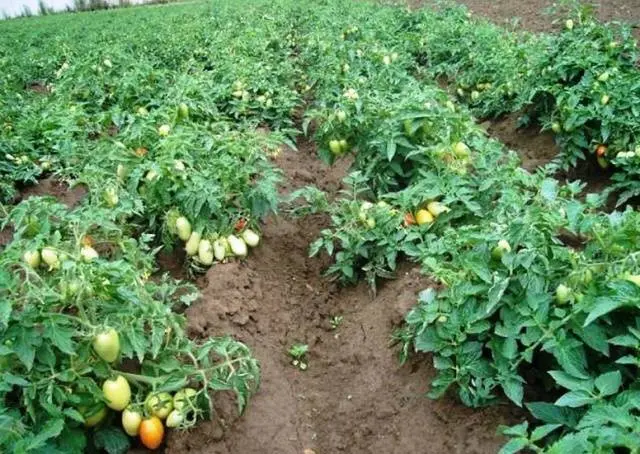
Use of nitrogen fertilizers
Nitrogen fertilizers feed a variety of crops. They have a very good effect on the growth and fruiting of cucumbers and tomatoes, potatoes and strawberries, beets and various fruit trees. In addition, nitrogen has a very positive effect on flowers such as tulips and roses. They often fertilize lawns and seedlings. Legumes require the least amount of nitrogen.
All existing nitrogen fertilizers are usually divided into 3 types:
- Ammonia. They contain a lot of nitrogen. Not recommended for use in acidic soils. This includes ammonium sulfate and other substances containing ammonium.
- Amide. In these substances, nitrogen is contained in the form of amide. The most popular representative of this group is carbamide or urea.
- Nitrate. They contain nitrogen in the nitrate form. They perform best in acidic soddy-podzolic soils. Used to prepare soil for planting. Sodium and calcium nitrate are considered the most effective fertilizers in this group.
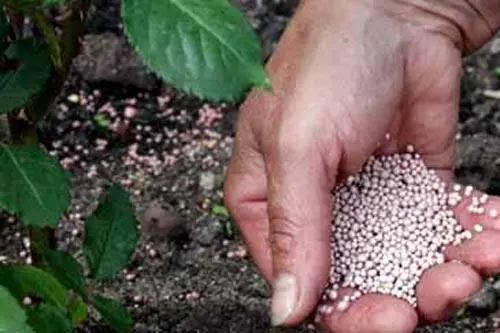
When to Use Nitrogen Fertilizers
The first fertilizing of tomatoes with nitrogen is carried out a week after planting seedlings in open ground. This will help the bushes grow and begin to actively form a green mass. After that, during the formation of ovaries, a second application of nitrogen fertilizers is carried out. This will extend the time of formation of ovaries and, accordingly, increase the yield.
Not only tomatoes planted in open ground need nitrogen-containing fertilizers, but also those that grow in a greenhouse. It is important to remember that complex fertilizers, which include phosphorus, cannot be applied to the soil that is not warmed up to a temperature of + 15 ° C. This substance is poorly absorbed by plants and can simply remain in the soil in excessive quantities.
Since nitrogen fertilizers often contain other nutrients, you need to know how and when to use them. For example, tomato seedlings, in addition to nitrogen, simply need potassium. This substance is responsible for the formation of fruits. It is important to ensure that potassium is included in the composition of the fertilizer, and in considerable quantities. It also has a direct effect on the immunity of tomatoes. Potassium helps seedlings cope with temperature changes at night and makes them more resistant to tomato diseases.
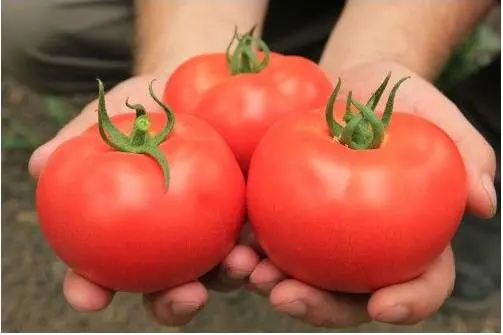
Magnesium, boron, manganese and copper may also be present in a complex nitrogen-containing fertilizer. All these and other minerals are excellent for growing plants and help them become strong and healthy. They can be applied directly to the soil or during watering.
Organic and mineral sources of nitrogen
Nitrogen is part of many fertilizers. Among the most popular and effective are the following:
- Nitroammophoska. This includes potassium, nitrogen and phosphorus in large quantities. These substances are the main source of strength for tomatoes. Most gardeners use this particular fertilizer, as it is considered one of the best.
- Superphosphate. This fertilizer is also one of the most common and effective. It contains a large number of nutrients that have a positive effect on the growth of tomatoes. For example, superphosphate contains nitrogen, magnesium, phosphorus, sulfur and calcium. It does not increase the acidity of the soil.
- Ammonium nitrate. It includes just a huge amount of nitrogen, from 25 to 35%. This is the most affordable fertilizer for tomatoes today. However, it should be used in parallel with other substances, such as urea. You also need to be careful about the dosage.
- Urea. Another name for this fertilizer is urea. This substance is 46% nitrogen. Can significantly increase the yield of vegetable crops. Suitable for all types of soil. Nitrogen in it is better perceived by plants, and is not washed out of the soil so quickly.
- Ammonium sulfate. It is used for top dressing of tomatoes at the very first stages of growth. Contains a large amount of nitrogen (21%) and sulfur (24%). The substance is readily soluble in liquid. It is easily absorbed by plants.
- Calcium nitrate. It contains only 15% nitrogen. Compared to other nitrogen fertilizers, this is not very much. However, it does not affect the composition of the soil so much. The fertilizer is suitable for non-chernozem soils, it can improve the composition of acidic soils. It has a very short shelf life, after which almost all useful properties are lost.

Among organic materials, you can also find many sources of nitrogen. For example, this could include:
- humus;
- peat;
- manure;
- mullein infusion;
- chicken manure;
- ash;
- herbal infusion.
To prepare an herbal infusion, you need to take a large container and place mowed green grass there. For this, nettle or dandelion is suitable. Then the greens are poured with water and covered with a film. In this form, the container should stand in the sun for a week. After this, the infusion must be filtered. The liquid is well stored in a dark cool place.
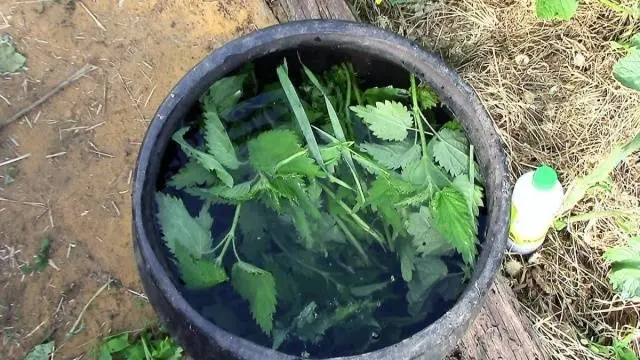
Organic nitrogen fertilizers
What kind of organic substances contain nitrogen, we said above, and now we will consider how to put them into practice. For example, you can mulch the soil with humus or compost. Thus, you can “kill 2 birds with one stone”, and feed the tomatoes, and mulch the soil.
Throughout the growing season, bushes can be watered with mixtures of organic matter and minerals. For the first solution, the following components should be combined in one container:
- 20 L of water;
- 1 l cow’s milk;
- 2 tablespoons of nitrophoska.
With this solution, it is necessary to water the plants in the amount of half a liter of liquid per 1 bush.
For the second mixture we need:
- 20 L of water;
- 1 liter of bird droppings;
- 2 tablespoons of superphosphate;
- 2 teaspoons of potassium sulfate.
All components are mixed in a large container until smooth. Then, half a liter of this mixture is poured under each bush.
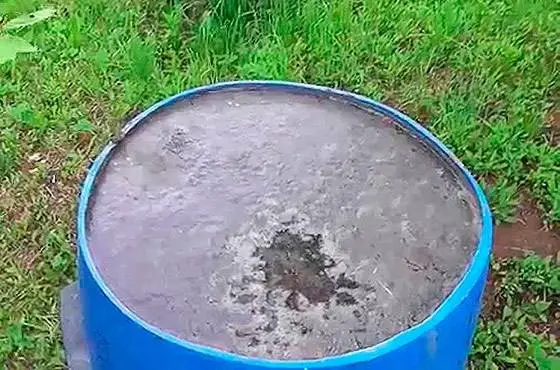
However, remember that using only organic matter will not make up for the need for nitrogen in tomatoes. The same chicken manure contains only 0,5–1% nitrogen, and compost made from household waste contains about 1,5%. This amount is not enough for plant nutrition. In addition, organic matter has the ability to oxidize the soil. Therefore, experienced gardeners are advised not to limit themselves to organic matter, but to alternate it with mineral complexes.
How much to apply fertilizer for tomatoes
Nitrogen-containing substances should be used with caution. Firstly, in excess they can adversely affect the formation of ovaries and fruits. And secondly, a large number of such substances can change the level of soil acidity. Therefore, nitrogen-containing fertilizers are applied in parallel with other minerals. This is done as follows:
- The first top dressing is necessary for tomatoes approximately 1-2 weeks after planting seedlings. At this time, complex nitrogen-containing solutions are introduced into the soil in the proportion of half a teaspoon per liter of water.
- After 10 days, you should water the tomatoes with a weak solution of manganese. This procedure is repeated every 10-14 days. Additionally, you can add a solution of bird droppings to the soil. To prepare a nutrient mixture, you need to mix 1 liter of chicken and 15 liters of water in one container. In addition, the soil around the bushes is sprinkled with wood ash. She kills fungi, and will not let the tomatoes get sick.
- After 10 days, ammonium nitrate is added to the soil. It is diluted in liquid in the amount of 16–20 g of the substance per 10 liters.

- To speed up the process of fruit ripening, it is necessary to mix potassium sulfate, urea and superphosphate in a ratio of 15/10/15 grams per ten-liter bucket of water.
- During the flowering period, plants can be fertilized with azophoska solution.
- Further, feeding is carried out no more than 2 times a month. To do this, you can use organic substances. Mullein and bird droppings are perfect. It is best to use them for irrigation in the form of a solution.
Signs of improper feeding of tomatoes
You can overdo it with the dosage of fertilizers not only when using mineral mixtures. Organic matter in large quantities can also adversely affect tomato seedlings. The condition of the plant immediately shows that it is overfed. For example, a large amount of nitrogen will be visible in a large spreading bush. Such a plant gives all its strength to the formation of stems and leaves, so there is no energy left on the ovaries and fruits. And since we want to grow good tomatoes, and not a beautiful bush, nitrogen fertilizers should be used carefully.
Nitrogen is simply necessary for plants in the period until flowers appear. Then top dressing of tomatoes with nitrogen should be stopped. In the future, nitrogen-containing mixtures will be needed by plants only after the first fruits appear on the first brush.
A lack of nitrogen can be manifested by changes in the color of the leaves. They will become light green or even yellowish. Then they can gradually curl, and the old leaves will begin to die off altogether. The surface of the sheet will become matte. You need to correct the situation immediately after the appearance of the first signs. Organic lovers can feed tomatoes with herbal infusion. And as a mineral fertilizer, you can use urea or ammonium nitrate.
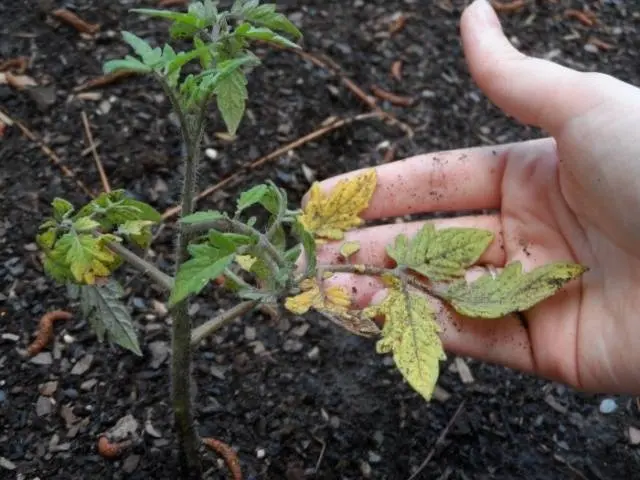
Phosphorus is often present in nitrogen fertilizers. This substance helps tomatoes develop resistance to cold. The lack of phosphorus immediately affects the appearance of the leaves. They turn purple. Remember that tomatoes do not grow well in rich soils.
Urea is a very useful fertilizer for tomatoes. Many gardeners successfully use this substance. However, it should be remembered that urea can only be added in the form of a solution. It is sprayed or watered the soil. In no case should this supplement be applied in granular form directly into the hole.
Organic matter has always been considered safer and healthier for plants. But still, their number should not be excessive either. For example, you can use mullein to feed tomatoes no more than 3 times per season.

Top dressing methods
There are 2 ways to apply nitrogen fertilizers:
- root;
- foliar.
The root method involves watering tomatoes with nutrient solutions. This method is very popular because it is very simple and effective. Most gardeners fertilize tomatoes in their plots this way.
The foliar method of applying nutrients is spraying the leaves and stems with prepared solutions. This method is less popular, however, is also very effective. The plant absorbs nutrients much faster through the leaves. When watering tomatoes under the root, only some of the minerals will be absorbed by the root system. In this case, the nutrients will be quickly washed out by rains.
Too concentrated a solution can burn the leaves. Under no circumstances should substances containing chlorine be used for spraying. The best time for foliar feeding is morning or evening. In the scorching sun, even a weak solution can lead to burns. Of course, it is necessary to carry out both root and foliar top dressing. Experienced gardeners alternate them using the most suitable fertilizers.
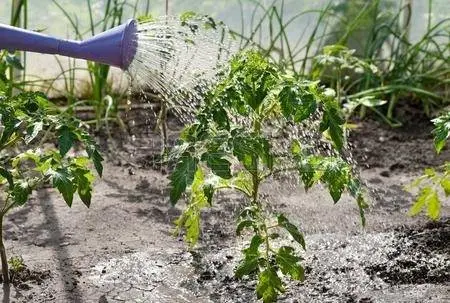
Conclusion
As we have seen, nitrogen fertilizers are extremely important for growing tomatoes. Nitrogen is responsible for the growth processes of the bush itself, as well as the formation of flowers and ovaries. Agree, without this, tomatoes simply will not be able to develop and bear fruit. The most important thing at the same time, learn to properly organize the conduct of dressings. It is important to consider the amount of substances introduced into the soil. A lack of minerals, like an excess, can negatively affect the growth of bushes and soil composition. Do not be afraid to use both organic and mineral fertilizers. All this in a complex will make your tomatoes strong and healthy. Watch your plants and you can see exactly what they need.










